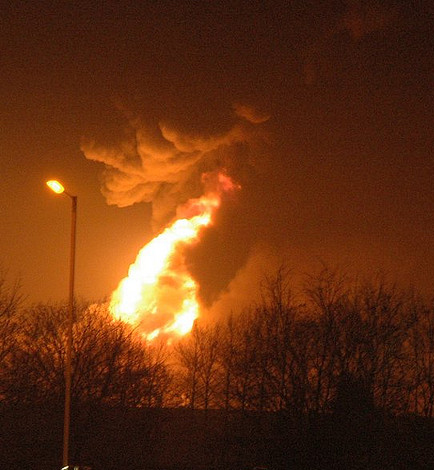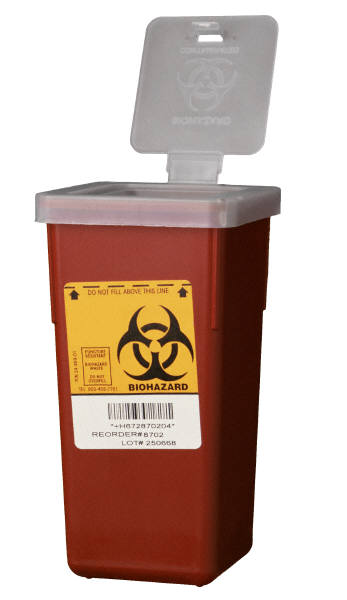One small but critically important sub-category of chemical incidents consists of those that can produce mass casualties, usually when a cloud of toxic or superheated gases are spewed out by a fire or explosion. Given America’s fragmented approach to hazardous materials regulation, it’s no surprise that separate regulatory programs have grown up to address these concerns—leading inevitably to overlaps and gaps in coverage.
Audit, Compliance and Risk Blog
Tags: Corporate Governance, Business & Legal, Health & Safety, OSHA, Environmental risks, Environmental, EHS, EPA, Greenhouse Gas, Hazcom
EPA Excludes Solvent-Contaminated Wipes From RCRA Regulation
Posted by Jon Elliott on Wed, Aug 14, 2013
Tags: Business & Legal, Employer Best Practices, Health & Safety, Environmental risks, Environmental, EHS, EPA, RCRA
If government provided a unified approach to chemical regulation, then each chemical might be subject to a single set of requirements, which ideally would be tailored to reflect chemical-specific hazards throughout its life cycle. Instead, each chemical is subject to its own loosely connected (some would say haphazard) collection of environmental, health and safety (EH&S) requirements. Some are federal, some are state (or provincial if you’re in Canada), and others are regional and even local. You may need to refer to agencies at all three levels (federal, state and local) to identify your regulators and their requirements – although many organizations only deal with the agency responsible for permitting and inspecting day-to-day activities.
Tags: Audit Standards, Environmental risks, Environmental, EHS, EPA, Hazcom, MSDS, mact
STP Launches New Industry-Specific MACT Standards Guides
Posted by Lorraine O'Donovan on Fri, Jul 12, 2013
Organizations increasingly need specialized guidance in order to self-audit and show efforts to comply with legislation, and demonstrate due diligence.
Tags: Corporate Governance, Business & Legal, Audit Standards, Environmental risks, Environmental, EHS, mact
July 1 was the deadline for subject facilities to file their annual toxic chemical release inventory (TRI) reports with the US Environmental Protection Agency (EPA) and their state, on one of two EPA-mandated forms, Form R or Form A. These TRI reports are mandated by Section 313 of the Emergency Planning and Community Right-to-Know Act of 1986 (EPCRA), which was adopted as the first Congressional response to the December 1984 toxic gas disaster in Bhopal, India.
Tags: Corporate Governance, Business & Legal, Health & Safety, Environmental risks, Environmental, EHS, Hazcom
ISO 14001 and the ISO 26000 Guidance on Social Responsibility
Posted by Allison Campbell on Fri, Jun 07, 2013
Organizations with a well-established ISO 14001 Environmental Management System (EMS) are discovering a new advantage as the issue of “social responsibility” becomes more widespread throughout business communities. EMS managers are finding that techniques and methodology from their EMS can be used to identify and prioritize social responsibility issues and efficiently integrate them into their organization. Furthermore, managers building an EMS system are able to develop it in concert with social responsibility initiatives.
Tags: Corporate Governance, Business & Legal, Employer Best Practices, Environmental, EHS, EPA
The US Environmental Protection Agency (EPA) continues to expand and refine environmental compliance requirements, including those related to greenhouse gas (GHG) emissions. In particular, facilities and organizations subject to EPA's mandatory GHG emission reporting rules should be preparing to submit reports covering calendar year 2012. Even an entity that reported 2010 or 2011 emissions will still have to adjust its data collection and information reporting efforts. Although reports typically are due March 31, that’s a Sunday this year so April 1 is the date.
Tags: Environmental risks, Environmental, EHS, EPA, ghg, fracking, climate change
Hospital Training Requirements: OSHA Training Regulations Revised
Posted by Viola Funk on Fri, Feb 01, 2013
If you’re responsible for hospital training requirements, and/or have responsibility for planning and carrying out a training program for your staff, you should know that OSHA regulations—such as the Hazard Communication Standard (HCS)—have been revised to conform to the UN’s Globally Harmonized System of Classification and Labelling of Chemicals.
Tags: Corporate Governance, Employer Best Practices, Health & Safety, OSHA, Training, EHS, Hazcom
Hazardous Material Regulations: Don't Forget Your 2012 Hazmat Inventory
Posted by Jon Elliott on Fri, Jan 18, 2013
If your facility handles sufficient quantities of hazardous materials (“hazmat”), then federal laws and regulations—specifically the federal Emergency Planning and Community Right-to-Know Act of 1986 (EPCRA)—requires you to compile and submit an annual inventory of qualifying hazmats to state and local agencies. Although EPCRA allows for abbreviated reporting (“Tier 1”) and full reporting (“Tier 2”), all states presently require Tier 2 reporting. Most agencies require facilities to use EPA’s “Tier 2” reporting forms and/or “Tier2/Submit” software, but some states have promulgated their own variants. Inventory reports are due on March 1 for the preceding calendar year, so January is a great time to confirm that your facility has collected and stored the appropriate data.
Tags: Health & Safety, Environmental risks, Environmental, EHS, EPA, Hazcom
Opportunities For Learning: Free STC Webinar Open To All
Posted by Melanie Powers on Fri, Jan 11, 2013
Essentials of Stationary Reciprocating Internal Combustion Engines (RICE) MACT Compliance
Date: Thursday, January 24, 2013
Time: 2:00 PM - 3:00 PM EDT
Free! All are welcome
Tags: Environmental risks, Environmental, EHS, EPA, mact, Webinar, NSPS

.jpg)







